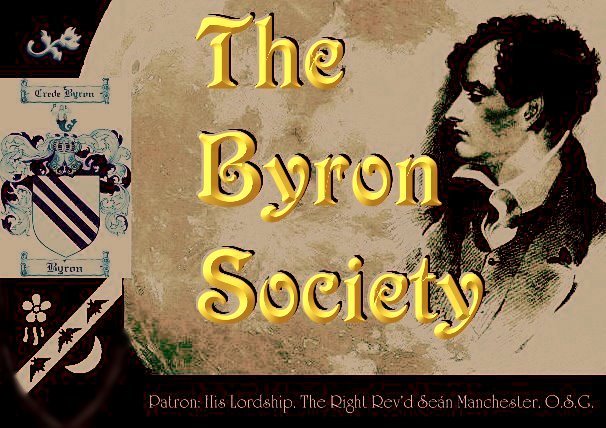Why would the entry for Lucy Monk's child of 1812 be defaced, but not the one for 1818 where Lord Byron is named on Allegra's baptismal record? Notwithstanding that different parishes and the incumbent had different ways of doing things, it is clear that Lord Byron was not present when the later entry was made. He also had nothing to lose in openly acknowledging Allegra to be his child. Unlike 1812, when there would have been every incentive not to mention such a famous lauded and public figure who might well hit back, despite him settling a sum to help Lucy look after the illegitimate progeny, in 1818 Byron's world had completely changed. He was in disgrace with fortune and society, and was by then living abroad in exile, never to return to that "tight little island."

Clara Allegra Byron (12 January 1817 – 20 April 1822) was the illegitimate daughter of the poet George Gordon, Lord Byron and Claire Clairmont. Born in Bath, England, she was initially named Alba, meaning "dawn," or "white," by her mother. At first she lived with her mother, her mother's step-sister, Mary Shelley, and Mary's husband Percy Bysshe Shelley. When she was fifteen months old she was turned over to Byron, who changed her name to Allegra. Byron placed her with foster families and later in a Roman Catholic convent, where she died at age five of typhus or malaria.

Mary Shelley had called the baby Allegra "the little Commodore" because of her sturdy body and alert, intelligent look. Byron was also pleased with Allegra's resemblances to himself in appearance and temperament. When she was eighteen months old, he wrote in a letter to a friend: "My bastard came three days ago—very like—healthy—noisy & capricious." In an 1818 letter to his half-sister Augusta Leigh, Byron wrote that "She is very pretty—remarkably intelligent ... She has very blue eyes—that singular forehead—fair curly hair—and a devil of a spirit—but that is Papa's." In 1819, in another letter to Leigh, Byron described two and a half-year-old Allegra as "very droll" and again commented on her resemblance to himself in physical appearance, temperament and interests: "(She) has a very good deal of the Byron. Can't articulate the letter 'r' at all—frowns and pouts quite in our way—blue eyes—light hair growing darker daily—and a dimple in the chin—a scowl on the brow—white skin—sweet voice—and a particular liking of Music—and of her own way in every thing—is that not B. all over?" The child had forgotten any English she had learned and now spoke only Venetian Italian. In March 1820, he complained in a letter that three-year-old Allegra was vain and "obstinate as a mule." Her behaviour was sometimes unmanageable, probably as a result of her unstable living arrangements and changing care-givers. At age four, the naughty child terrorised Byron's servants with her temper tantrums and other misbehavior and told frequent lies.
As she grew older, Allegra also demonstrated a talent for acting and singing. Byron's mistress Teresa, Contessa Guiccioli, whom Allegra called "mammina," remarked on Allegra's talent for mimicking the servants and for singing popular songs. Byron felt her mimicry, another talent she shared with him, might amuse other people in the short term, but would eventually be a cause of trouble for her.
Allegra developed a high fever on 13 April 1822. The nuns called a doctor to see her. He determined that Allegra was suffering "little slow fevers." Her father was informed, but Byron did not visit. He nonetheless approved the use of any medical interventions deemed necessary. She was considered out of danger on April 15th. However, she died on April 20th, attended by three doctors and all of the nuns at the convent, of what some biographers have identified as typhus.
Byron sent her body to England and wrote an inscription for her gravestone that read: "In memory of Allegra, daughter of G.G., Lord Byron, who died at Bagna Cavallo in Italy, 20 April 1822, Aged Five Years and Three Months,-'I shall go to her, but she shall not return to me.'-2 Samuel, xii, 23." He felt guilty about his neglect of the child after her death, and told Marguerite, Countess of Blessington, a few months afterwards:
"Let the object of affection be snatched away by death, and how is all the pain ever inflicted upon them avenged! The same imagination that led us to slight or overlook their sufferings, now that they are forever lost to us, magnifies their estimable qualities ... How did I feel this when my daughter, Allegra, died! While she lived, her existence never seemed necessary to my happiness; but no sooner did I lose her, than it appeared to me as if I could not live without her."
Claire Clairmont accused Lord Byron of murdering Allegra and demanded that he send her a portrait of Allegra, a lock of the child's hair, and that she be placed in charge of the funeral arrangements. In the end, though, Claire could not bear to see Allegra's coffin or to hold a funeral service for her daughter. She blamed Byron for the rest of her life for Allegra's death.
Scandalised by the child's illegitimacy, the rector of St Mary's Parish Church in Harrow, Middlesex, England, refused to place a plaque on Allegra's grave and permitted her only to be buried at the entrance of the church without a marker. In 1980, The Byron Society placed a memorial plaque for Allegra at Harrow, inscribed with words from a letter Byron wrote to Shelley after her death:
"I suppose that Time will do his usual work... – Death has done his."






















